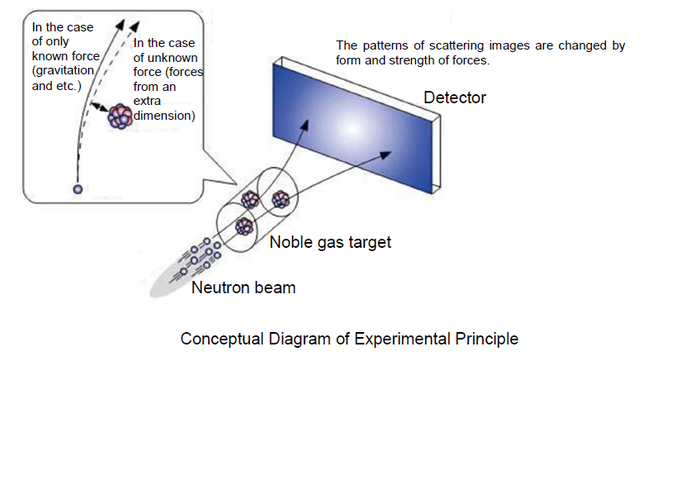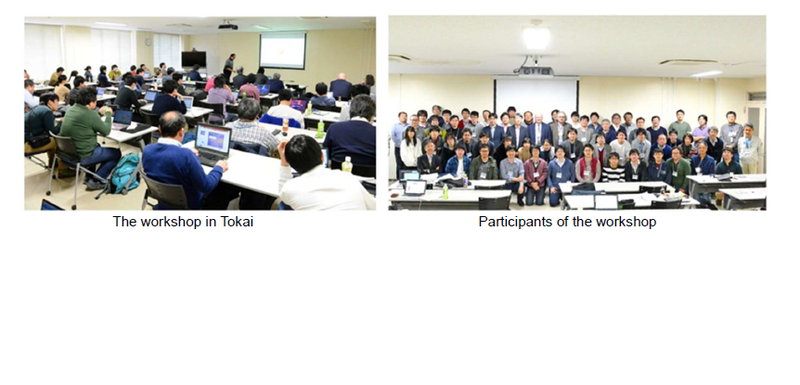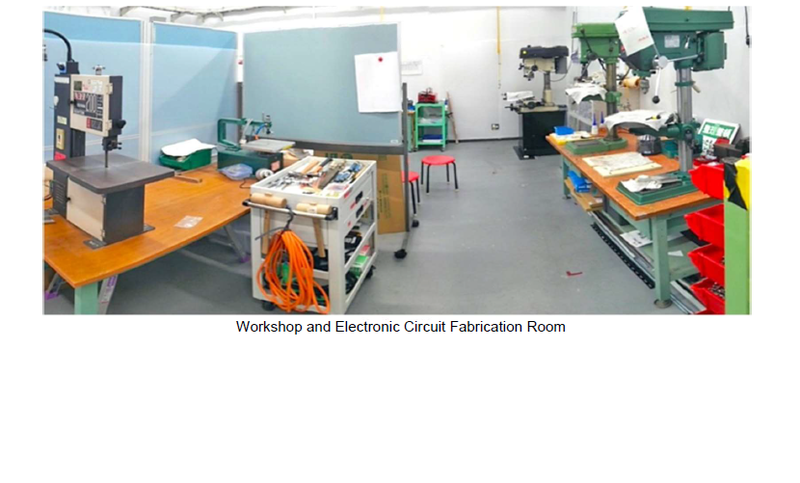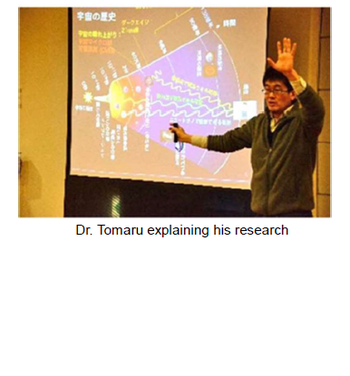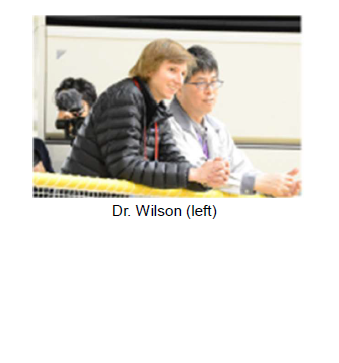J-PARC NEWS April 2018 (Issue #156)
■Dr. Naohito Saito Reappointed as Director of the J-PARC Center
Dr. Naohito Saito has been reappointed as Director of the J-PARC Center starting from fiscal year 2018. His term will extend from April 1, 2018 to March 31, 2021. J-PARC has started the new fiscal year with the aim of helping to develop a variety of sciences as a multi-purpose research facility, and contributing to the development of practical science and technology to meet the needs of society.
■Steps to Verify an Atomic-Size Unknown Force using a Pulsed Neutron Beam (March 23, Press Release) —A Major Step in Exploring Whether Space is Composed Only of the Three Dimensions of Height, Width, and Depth—
In joint research with Kyushu University, Nagoya University, Osaka University, and Indiana University, Dr. Kenji Mishima (KEK) of the Neutron Science Section has investigated an unknown force acting at distances of atomic size (0.1 nanometers) by using the instrument, the Neutron Optics and Physics (BL05, NOP) at the Materials and Life Science Experimental Facility (MLF). In this experiment, a pulsed neutron beam was irradiated onto a container enclosing a noble gas target, and the scattering angle distribution of neutrons was precisely measured. If an unknown force exists, error will arise due to deviation from the expected distribution. In this work, measurement sensitivity for such error was successfully improved by one order of magnitude compared to previous experiments. This research is being supported by a Grant-in-Aid for Young Scientists (B) (JP25800152), and a Grant-in-Aid for Creative Scientific Research (JP19GS0210).
■Successful Elucidation of the Structure of a Heavy Hypernucleus (Lambda Hypernucleus of Fluorine-19, 19ΛF) (April 3, Press Release)
There are many mysteries regarding properties of the nuclear forces that form the atomic nucleus by binding together protons and neutrons, and we still lack a clear answer to the important question of why it is possible for the atomic nucleus to exist. Therefore, researchers at the Hadron Experimental Facility are artificially creating hypernuclei, in which lambda particles similar to the protons and neutrons comprising the atomic nucleus are inserted into atomic nuclei, and research is being conducted to investigate the nuclear forces acting between the lambda particles and protons/neutrons. In this research, the level structure of a fluorine-19 hypernucleus was determined for the first time by producing excited states of fluorine-19 hypernuclei containing lambda particles using the K1.8 beamline of the Hadron Experimental Facility, and measuring gamma rays emitted due to deexcitation. These experiments showed that findings on nuclear forces previously discovered through research on light hypernuclei are also valid for the comparatively heavy fluorine-19 hypernucleus. The results were featured in the international physics journal "Physical Review Letters 120."
■Junpei Nakamura Receives the KEK Technology Prize 2017
Dr. Junpei Nakamura of the MLF Muon Science Section received the KEK Technology Prize 2017 for the development of "technology for the transport and intensity measurement of coherent Lyman-α light that realizes ultra-slow muon production." The award was presented on December 26 of last year. Thanks to the development of this technology, it has become possible to stably produce ultra-slow muons, and obtain a variety of measurement results such as determining for the first time the Lyman-α light wavelength dependence of ultra-slow muon yield.
■International Workshop for Planning Expansion of the Hadron Experimental Facility (March 26–28, J-PARC/KEK Tokai Building No. 1)
An international workshop to plan expansion of the Hadron Experimental Facility was organized by the Hadron-hall Users’ Association, and held at KEK Tokai Building No. 1. The workshop was held over the three days March 26 (Mon.) to 28 (Wed.). On the first day, the speakers presented an overview of the expansion plan, results at current facilities, and research plans for two facilities overseas (Jefferson Lab. in the U.S., and PANDA@GSI-FAIR in Germany). On the second day, there were discussions in three break-out sessions. On the final day, there were reports from each working group and the Nuclear Physics Committee Task Force, and discussion of the pertinent topics. Participants contributed specific ideas, such as what sort of experiments should be done at beamlines whose expansion plans are being considered, and whether there are any experiment themes that have been overlooked in previous plans. There were lively discussions on the way toward preparation of experiment proposals.
■Meeting to Exchange Information Between MYRRHA and J-PARC Relating to ADS Accelerators (March 6–7, J-PARC)
Accelerator-Driven Systems (ADS) are thought to be an effective technology for reducing the volume and hazard of high-level radioactive waste. Recently, there was a visit by three researchers from MYRRHA, an ADS experimental reactor construction project in Belgium, and a meeting was held to exchange information with J-PARC researchers in the field of accelerators and transmutation. At this meeting, there were presentations on the current status of accelerator development at MYRRHA, experiences with accelerator operation at J-PARC, future development plans, and other topics. In particular, participants discussed measures for achieving the high reliability needed by ADS accelerators. It is expected that linac will be used to supply proton beams to ADS, and during the facility tour, the persons in charge explained J-PARC's LINAC and accelerator control systems. This meeting for exchanging information had great advantages for both sides, and thus these meetings will continue in the future.
■Opening of Workshop and Electronic Circuit Fabrication Room (J-PARC Research Building)
A workshop and electronic circuit fabrication room, available for use by users and center staff, has been opened on the first floor of the J-PARC Research Building. To use the workshop, users are asked to take a safety course beforehand, and submit a use application. The electronic circuit fabrication room can be using without any prior procedures in the case of light work using shared pieces of equipment. A variety of tools are provided to meet everyone's needs, so we hope you will make use of the facilities. In the future, details on methods of use will be provided at the Users Office home page and elsewhere.
■Held 15th J-PARC Hello Science Event "Let's Observe the Universe with Gravity Waves" (March 30, Tokai Industry and Information Plaza "iVil")
At the March science cafe, Dr. Takayuki Tomaru of the KEK Gravity Wave Group spoke on the theme mentioned in the title. The universe can be investigated in greater detail by examining gravity waves, and thus plans are moving forward worldwide to build an "international gravity wave telescope observation network." It was reported that KAGRA (a large scale cryogenic gravitational wave telescope) plans to participate in the project after it is completed. It was also pointed out that KAGRA employs cryogenic and ultra-high vacuum technology used in J-PARC's neutrino superconducting beamline.
■Inspection tour of J-PARC by U.S. physicist Taylor Wilson (April 12)
The physicist Taylor Wilson is attracting attention in the U.S., and during his visit on April 12 to the Japan Atomic Energy Agency, he toured J-PARC's MLF and testing equipment for research on nuclear transmutation technology, and exchanged views with the researchers. Wilson, who is currently 23 years old, was invited to deliver a special presentation at the 51st JAIF (Japan Atomic Industrial Forum) Annual Conference on the 9th. He spoke of his desire to help improve the lives of people throughout the world using science and technology, and said he is keeping an eye on transmutation technology as an option for dealing with the problem of radioactive waste disposal.


